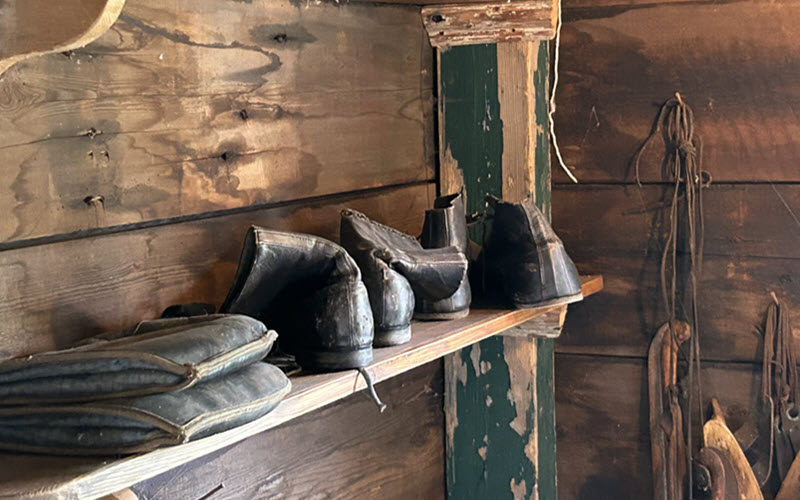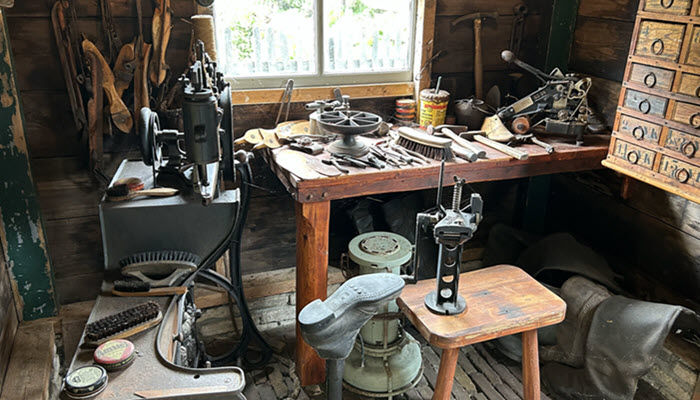The cordwainer is an old word for shoemaker. Long before the arrival of mass-produced footwear, cordwainers crafted shoes by hand, tailored to the wearer’s feet, and built to last. This was not only a skilled trade but also a respected occupation, with many working independently in small workshops or as part of a local guild.
Origins and Historical Guilds
The word cordwainer comes from cordovan, a fine leather historically made in Córdoba, Spain.
In Scotland, cordwainers were also known as cordiners. If they worked in a burgh (a town given permission by the king to run its own affairs) they probably belonged to an incorporated guild, such as the Cordiners of Edinburgh or Glasgow. These guilds regulated apprenticeships, maintained quality standards, and protected the rights of their members. As a result, guild records are a valuable resource for anyone tracing an ancestor who was a shoemaker.
Tools, Skills, and Daily Work of the Cordwainer
The work of a cordwainer required skill, strength, and precision. Using traditional tools such as lasts (wooden foot moulds), awls, hammers, and knives, shoemakers cut and stitched leather to create bespoke shoes and boots. Many shoemakers also supplemented their income by mending worn shoes and boots.
Researching the Cordwainer in your Family Tree
There are many records worth investigating. Parish registers, census returns, and trade directories often list occupations, and you may also find them advertising in local newspapers.
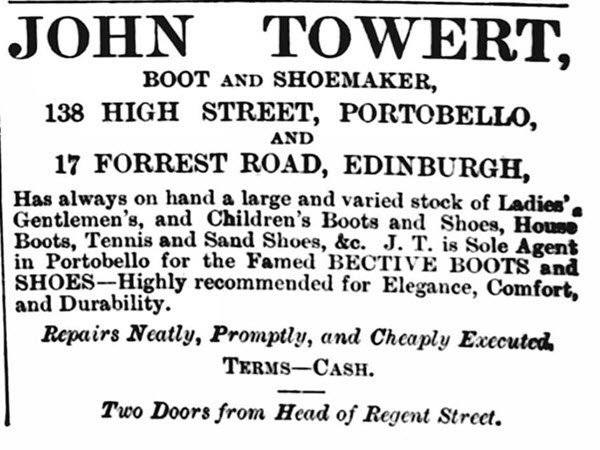
Burgh records such as guild minutes and apprenticeship agreements can provide further detail. For example:
- Edinburgh – The Incorporation of Cordiners of the City of Edinburgh records (1477–1976) are held at the National Records of Scotland (GD348), along with the Cordiners of the Canongate records (GD1/14).
- Glasgow – The Mitchell Library (Glasgow City Archives) holds Incorporation of Cordiners records under the Trades House collections, including minute books, admission rolls, and apprentice registers. Furthermore, a published history of the Incorporation of Cordiners in Glasgow (1883) is available through the Trades House Digital Library and local collections.
- Aberdeen – Aberdeen City & Aberdeenshire Archives have records for the Shoemakers’ Trade (part of the Seven Incorporated Trades) as well as the Banff Incorporation of Shoemakers (DD2880).
- Dundee – The University of Dundee Archives has records on the Nine Incorporated Trades (MS15), which includes shoemakers, and an 1877 alphabetical list of the members (MS 15a/11).
When contacting archives, it is worth asking for:
- Minute books of the incorporation/trade
- Admission and apprenticeship registers
- Accounts and fines records
- Burgess and guildry rolls of the burgh
- Printed trade histories and directories
The Decline of the Cordwainer’s Trade
The cordwainer’s trade gradually declined in the late 19th and early 20th centuries as factory-made footwear became more affordable.
For family historians, the surviving guild and trade documents are a wonderful resource to explore.
Until my next post, haste ye back.
Enjoyed this post?
Keep up-to-date with my latest posts and tips below:
We hate SPAM & promise to keep your details safe.
Image Credits: Sarah Smith
You may also like...
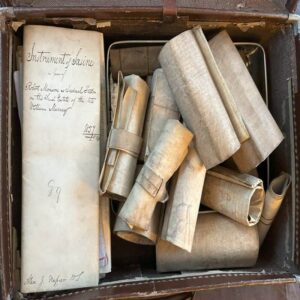
Unlocking Family Tree Secrets
A family tree was brought to life by an old suitcase revealing links to Balvaird Castle, Murrayshall and Scone Palace.
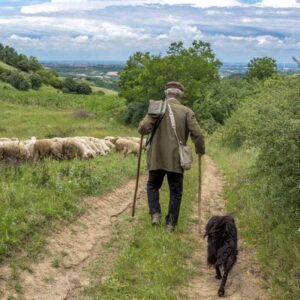
Is your surname Shepherd?
The surname Shepherd is one of the oldest occupational names found in Scotland. As the name suggests, it comes from looking after sheep.

My Ancestor was from Dunkeld Town
Dunkeld town, known as the Gateway to the Highlands, is located on the banks of the River Tay beside Thomas Telford’s bridge.
